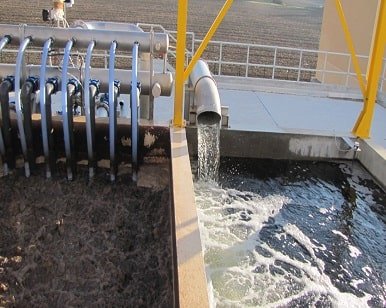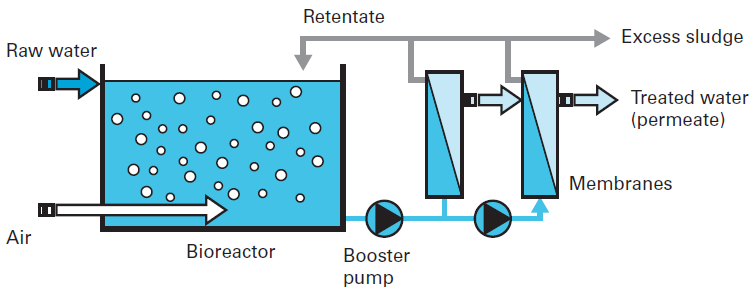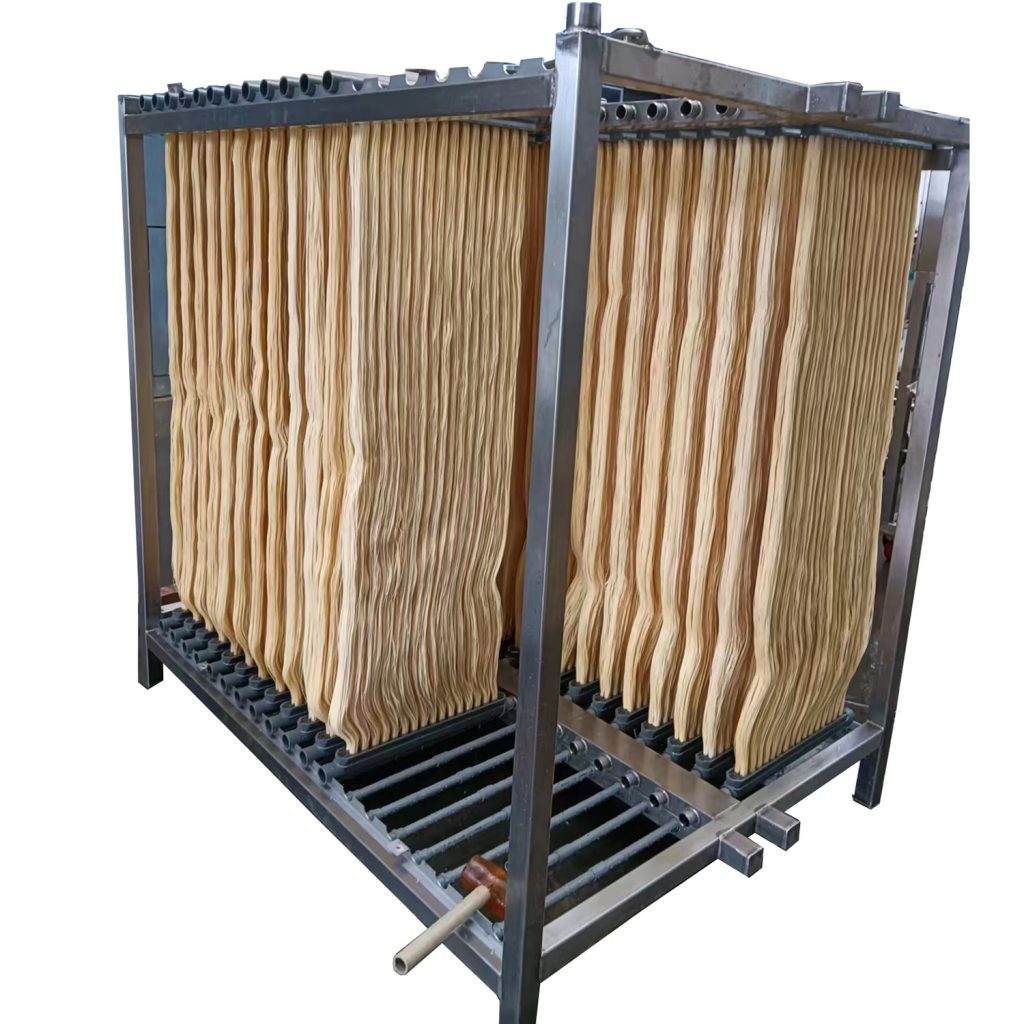The Economic Benefits of Installing a Membrane Bioreactor for Your Facility
The Economic Benefits of Installing a Membrane Bioreactor for Your Facility
Blog Article
Just How Membrane Bioreactors Are Changing Water Purification Systems
The emergence of membrane bioreactors (MBRs) represents a significant advancement in the field of water filtration, combining organic treatment processes with sophisticated membrane filtering modern technologies. As global water deficiency increases, the role of MBRs in helping with drinkable water reuse and lasting water management ends up being increasingly critical.
Overview of Membrane Bioreactors
Membrane bioreactors (MBRs) represent a considerable advancement in water filtration technology, as they incorporate biological therapy procedures with membrane filtering. This integration boosts the effectiveness of wastewater treatment by utilizing microorganisms to break down natural toxins while at the same time using semi-permeable membrane layers to different treated water from suspended pathogens and solids.
The MBR system generally contains an organic reactor where the microbial populace metabolizes contaminants, followed by a membrane filtration unit that preserves biomass and allows just tidy water to go through. This double capability causes greater effluent quality compared to conventional therapy approaches. MBRs can be operated in both batch and continual circulation modes, using flexibility in design and application.
Furthermore, MBRs are identified by their compact footprint, making them ideal for urban settings with room restraints. Membrane Bioreactor. They likewise enable the recovery of water for reuse, thus contributing to water sustainability initiatives. While MBR modern technology has actually gotten appeal in metropolitan and industrial applications, its functional intricacies and power needs require cautious consideration during implementation. On the whole, MBRs are at the center of improving water therapy effectiveness and high quality, showcasing the capacity for cutting-edge remedies in ecological administration.
Benefits of MBR Technology
The combination of organic treatment with membrane layer purification provides numerous advantages for water purification procedures. One of the key advantages of Membrane Bioreactor (MBR) innovation is its capability to successfully eliminate both not natural and natural pollutants, bring about premium effluent. The membrane layers act as a physical barrier, preventing suspended solids and microorganisms from passing through, which improves the overall safety and dependability of treated water.
In addition, MBR systems call for a smaller footprint contrasted to conventional treatment techniques, enabling for much more reliable space usage. This compact style is specifically helpful in urban settings where land is restricted. MBRs additionally show operational flexibility, fitting differing influent qualities and circulation prices without significant performance degradation.
Additionally, the process offers enhanced nutrient elimination capacities, specifically for nitrogen and phosphorus, which are vital for protecting against eutrophication in receiving waters. The minimized sludge manufacturing connected with MBR technology also equates to lower disposal costs, making it an economical option over time - Membrane Bioreactor. On the whole, the advantages of MBR modern technology setting it as a leading choice for innovative and sustainable water filtration systems, attending to both environmental and economic concerns
Applications in Water Filtration
Applications of Membrane Layer Bioreactor (MBR) innovation in water filtration are varied and impactful, attending to numerous treatment requires throughout multiple industries. MBRs efficiently combine organic therapy procedures with membrane layer filtration, making them optimal for municipal wastewater treatment, commercial effluent administration, and even safe and clean water reuse campaigns.
In metropolitan setups, MBRs are significantly used to improve the high quality of treated wastewater, enabling conformity with stringent discharge guidelines and helping with the recycling of water for watering helpful site and non-potable uses. Their portable style likewise makes them ideal for metropolitan atmospheres where room is limited.
Industrially, MBR technology is made use of to treat procedure water and wastewater, particularly in industries such as food and drink, drugs, and textiles. By successfully removing pollutants and put on hold solids, MBRs assist sectors lessen ecological effects while recovering useful sources from wastewater streams.
Moreover, MBRs are getting traction in decentralized water treatment applications, where small systems can be released in remote locations or creating areas. This adaptability allows neighborhoods to accomplish sustainable water administration remedies, boosting accessibility to clean water while minimizing reliance on typical treatment methods.
Instance Studies and Success Stories

In an additional example, a textile production center in Bangladesh took on MBR technology to resolve its wastewater obstacles. The system decreased chemical oxygen demand (COD) levels from 1,200 mg/L to much less than 100 mg/L, thus meeting regulatory requirements and dramatically decreasing ecological impact.
The College of Cape Community's MBR installation has actually verified effective in treating greywater for non-potable reuse on campus. This project not just saves drinkable water but additionally functions as an instructional model for lasting methods.
Moreover, a seafood handling plant in Norway utilized MBR innovation to try here treat effluents having high levels of raw material, achieving over 90% toxin removal. These study highlight MBR innovation's convenience and its essential role in boosting water quality across diverse applications.
Future of Water Therapy Solutions
As worldwide water scarcity and contamination obstacles magnify, ingenious water treatment services are coming to be significantly necessary to guarantee lasting access to clean water. The future of water therapy hinges on the combination of innovative technologies that enhance the efficiency and performance of filtration procedures. Membrane bioreactors (MBRs) go to the leading edge of this evolution, integrating organic treatment with membrane filtration to create top notch effluent appropriate for different applications.

Arising trends such as resource healing from wastewater, including nutrients and power, will even more change therapy centers right into eco-friendly centers. Furthermore, developments in nanotechnology and membrane layer materials guarantee enhanced efficiency and long life of filtration systems.

Conclusion
Their function in safe and clean water reuse and lasting water administration highlights their value in addressing international water shortage difficulties. Proceeded research and advancement will better improve the effectiveness and adoption of MBR innovation, making sure a resistant future for water therapy options.
The appearance of membrane layer bioreactors (MBRs) represents a substantial improvement in the area visite site of water purification, merging organic therapy processes with sophisticated membrane layer filtering technologies. As worldwide water shortage escalates, the role of MBRs in promoting drinkable water reuse and sustainable water monitoring ends up being increasingly essential. They also make it possible for the healing of water for reuse, therefore contributing to water sustainability campaigns.As international water scarcity and air pollution difficulties heighten, cutting-edge water therapy solutions are becoming significantly crucial to guarantee lasting accessibility to clean water. Their function in potable water reuse and lasting water administration highlights their significance in resolving international water deficiency obstacles.
Report this page